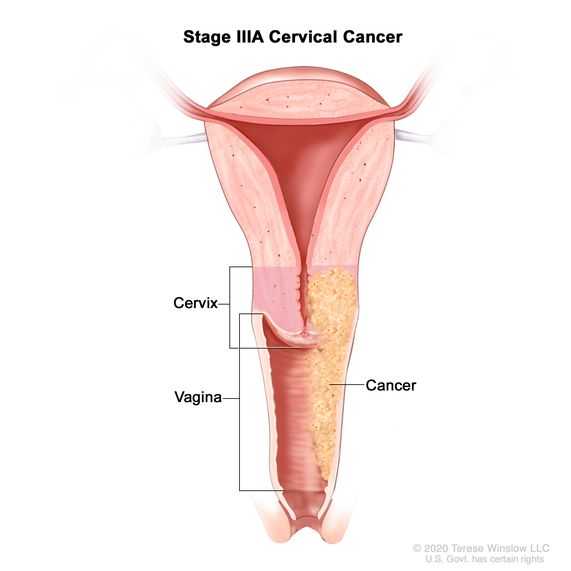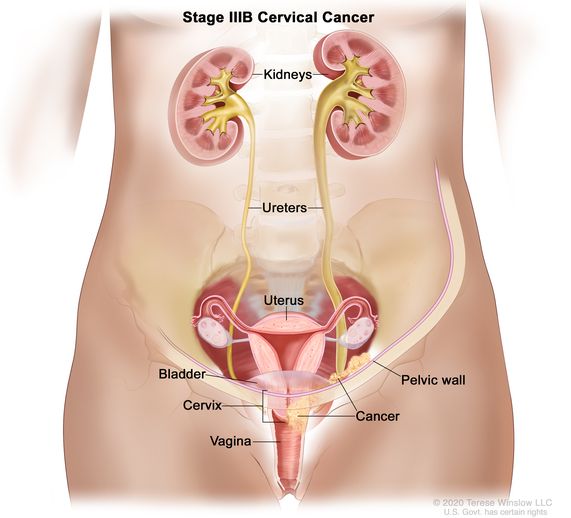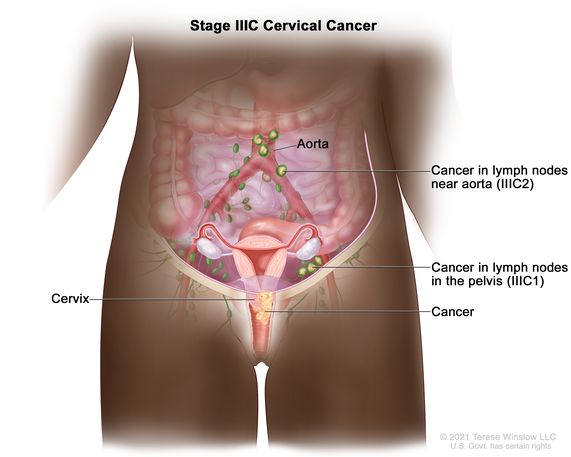stage III cervical cancer
(... SER-vih-kul KAN-ser)
Cancer has spread to the lower third of the vagina, and/or to the pelvic wall, and/or has caused kidney problems, and/or involves lymph nodes. Stage III is divided into stages IIIA, IIIB, and IIIC, based on how far the cancer has spread. In stage IIIA, cancer has spread to the lower third of the vagina but has not spread to the pelvic wall. In stage IIIB, cancer has spread to the pelvic wall and/or the tumor has become large enough to block one or both ureters (tubes that connect the kidneys to the bladder) or has caused one or both kidneys to get bigger or stop working. Stage IIIC is divided into stages IIIC1 and IIIC2, based on the spread of cancer to the lymph nodes. In stage IIIC1, cancer has spread to lymph nodes in the pelvis. In stage IIIC2, cancer has spread to lymph nodes in the abdomen near the aorta.


